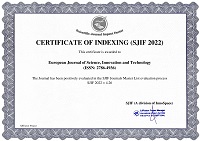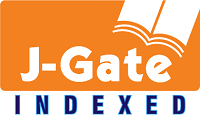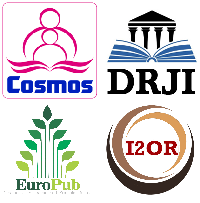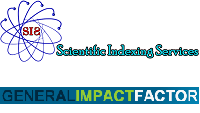Framework for Improving Quality Health Information to Reduce Maternal Morbidity and Mortality in Migori County, Kenya
Abstract
Quality health framework is a reference guide to evaluate and improve healthcare. It provides guidance to health services, on what good quality care entails and how it can be evaluated and demonstrated. Healthcare and quality are complex and highly vary between low and high income countries. Using quality health information reduces maternal morbidity and mortality among healthcare facilities; County referral, St Joseph mission, Rongo Sub County referral and Isebania county hospitals. Therefore, a framework was developed to improve data/ information quality and in turn maternal healthcare. The study used cross-sectional design and the population sample size for the study was 155 healthcare workers. The sample size was determined by Cochran method and closed ended questionnaires were used to collect data. Data analysis used statistical package for social scientists (SPSS), and results were presented in percentages using tables and charts. These data were collected from healthcare workers and analyzed to determine quality of health information to reduce/ prevent maternal morbidity and mortality in Migori County. The study revealed that, the framework can improve quality of data, information and healthcare services. This resulted from data collected and analyzed using basic variables; Agree/ strongly agree achieving 95% for Migori county referral hospital, St Joseph 94%, Rongo subcounty referral hospital 96% and Isebania county hospital 95% and on average coverage was 95%. The frame is good for improving data/ information quality and its implementation is necessary due to its effectiveness.
References
Manya et al. (2016). Digital Health Atlas for ongoing monitoring of HIS implementations in Kenya.
Marcotte, L., Seidman, J., Trudel, K., Berwick, D. M., Blumenthal, D., Mostashari, F., & Jain, S. H. (2012). Achieving meaningful use of health information technology: a guide for physicians to the EHR incentive programs. Archives of Internal Medicine, 172(9), 731-736.
Mphatswe, W., Mate, K. S., Bennett, B., Ngidi, H., Reddy, J., Barker, P. M., & Rollins, N. (2012). Improving public health information: a data quality intervention in KwaZulu-Natal, South Africa. Bulletin of the World Health Organization, 90, 176-182.
NHS. (2021). Quality and Safety Framework (NHS, 2021) information framework.
Rezae, P., Ahmadi, M., & Sadughi, F. (2007). Comparative study on EHR content, structure, and terminology standards in selected organizations and design a model for Iran. Journal of Health Administration, 10(29), 55-64.
Tang, P. C., Ash, J. S., Bates, D. W., Overhage, J. M., & Sands, D. Z. (2006). Personal health records: definitions, benefits, and strategies for overcoming barriers to adoption. Journal of the American Medical Informatics Association, 13(2), 121-126.
WHO. (2018). Handbook for national quality policy and strategy – A practical approach for developing policy and strategy to improve quality of care. Geneva: World Health Organization.
WHO/UNICEF/UNFPA/World Bank (2007). Maternal mortality. Estimates. Geneva.
Yost, J., Dobbins, M., Traynor, R., DeCorby, K., Workentine, S., & Greco, L. (2014). Tools to support evidence-informed public health decision making. BMC Public Health, 14, 728.
Copyright (c) 2025 Wilfred Obwocha

This work is licensed under a Creative Commons Attribution 4.0 International License.


 ISSN
ISSN 











